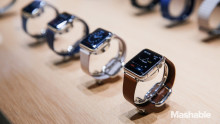Vulnerable Android and iOS Apps Expose Billions to FREAK Flaw
Security experts have warned that 2,000 Android and iOS apps are still vulnerable to the much publicized FREAK flaw over a fortnight after it was first disclosed, exposing billions of users to data loss.
FireEye researchers scanned 10,985 Google Play Android apps with more than one million downloads each and found 1,228 (11.2%) were still vulnerable to FREAK.












































































